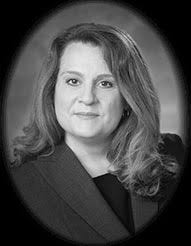Our in conversation with … series of posts introduces readers to the people behind the Transforming Stories, Driving Change project. These are the artists, researchers, and community participants who desire Transforming Stories to make a substantive contribution to civic engagement in the city of Hamilton. Here, we’re delighted to be speaking with Katherine Kalinowski, Assistant Executive Director, Programs at Good Shepherd Centres in Hamilton.
“Transforming Stories, Driving Change reminds me that there are other ways to look at what’s wrong with the system and how to fix it.”
How did you get involved on Transforming Stories, Katherine?
I connected with Chris Sinding [co-Principal Investigator of Transforming Stories, Driving Change] from McMaster. She was working on a project that would allow people whose voices are often not heard in our community to participate in a theatre-based project that would give voice to the matters that concern them. I’ve long struggled as a social service provider who has some responsibility around fundraising, with how the voices and stories of the folks we serve are used in very particular ways. I love the idea of groups of folks coming together and sharing their stories and creating something really meaningful, educational and invigorating without having to personally reveal the most painful pieces of their past.
I chair the Women’s Housing Planning Collaborative here in Hamilton, and we have an advisory group of women with lived experience who advise us on how to build better services for women who were experiencing housing precarity or homelessness. They expressed interest in the project and became one of the first groups to participate. It was amazing to see what this project meant to the women. It was transformative for many of them and allowed them to claim their voices in new ways.
In your opinion, how was Transforming Stories transformative for the women who participated?
Certainly, they could speak to that far better than I can. But from what I’ve observed, it created a space in which women who don’t necessarily get heard can be heard. And collective action is very powerful. Poverty, homelessness and oppression of all types thrive on isolation. So, when you can breach that isolation and get disparate people together and find their commonalities that is transformative for individuals but also for the community. It’s also the audience that is transformed. The audience, who may think that they are quite knowledgeable about an issue, is challenged to question assumptions and create new understandings of really complex, really difficult issues.
Have you participated in any of the activities that they call performance-as-research?
A couple of weeks ago I participated in a morning workshop where I and some of the other people involved in this project were invited to try some of the exercises and activities that result in the creation of performance pieces. It was very interesting. I can’t say I was surprised by the kinds of activities, but it really pushed me out of my comfort zone to have to interact in a group in that way, to share in that way, to use my body and my voice in different ways than I normally do. While I wasn’t entirely comfortable with every aspect of it, it was an incredibly supportive environment infused with intelligence and humour. I came away feeling far more connected to the project because I could understand how the creative process would unfold, which allowed me to endorse and support the project in a more meaningful way.
What difference do you think the project has made on a broader level in terms of your work as a social service provider?
Watching a pilot performance that was presented to a group of McMaster students, largely social work students, hearing their reactions and their “aha” moments after watching the performance, I was struck by the value of this type of exchange. You can learn lots from books, lectures and placement opportunities, but to sit and be present with people as they speak their truth, in a place where the people speaking have more power than they would in typical social work kinds of transactions, that is meaningful. That it can change how some of these students will go out into our community, how they will approach their work, and the kind of contribution they make, that is powerful.
What pieces of advice would you give a social service provider who is interested in being on this project, or endorsing Transforming Stories?
I would say that it’s easy to be too busy to participate in a project like this, especially in a time where human service providers are dealing with increasing demand and static resources.
These persistent pressures can limit our openness to creative community engagement. I would encourage other providers to take the time to find creative people in their communities and support and endorse their work. And learn from the work they do. Doing this can change our work for the better. Transforming Stories reminds me that there are other ways to look at what’s wrong with the system and how to fix the system.
I also think it is important that we continue to strengthen the relationship between community agencies and academia. I don’t think we are always effective as providers and as academia in connecting in meaningful ways or recognizing the more direct connections between our different streams of work and how they can be leveraged for the greater good.
I’m excited to see what comes out of this. I’m excited to hear from people who participate in it, and I am really grateful for the interesting and amazing people I am meeting through the process.



It’s great to be working with you, Katherine! One of the most exciting things about this project for me is the number of different perspectives we are seeing. I know how busy social service providers are in Hamilton, so I am really grateful when folks like you make the time to help those of us who work more in academic and artistic worlds get out of our comfort zones to consider how social change plays out “on the ground.”